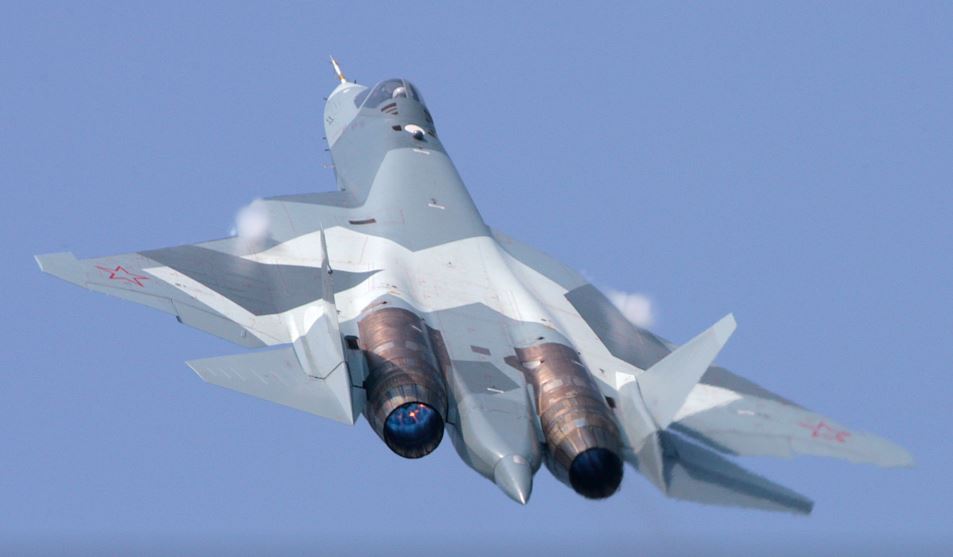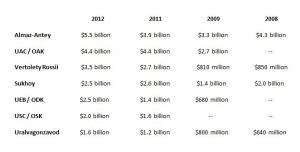While the Pentagon frets over its chances against China or Russia, Vzglyad’s Mikhail Bolshakov writes about why the Russian air forces would lose a battle with the United States.
Russia’s purported fifth-generation Su-57 fighter — yet to enter series production — might (as the VKS and OKB Sukhoy insist) be superior to American F-22 and F-35 fighters, but Bolshakov says the U.S. would still win.

Sukhoy chief designer Mikhail Strelets claims the Su-57 combines and surpasses the capabilities of the F-22 and F-35 in one fighter. The choice of the index 57 — sum of 22 and 35, he says, was a coincidence but still indicative.
However, Bolshakov points out, the U.S. has 187 F-22 and 320 F-35 aircraft in its operational inventory at present. Russia has no Su-57 fighters in line units.

The F-22 is 28 years old, and the F-35 at 18 is still suffering growing pains. And Russia, Bolshakov concludes, has clearly not lost its ability to design and produce modern combat aircraft. It built a competitive fighter in a short period of time.
Lacking U.S. levels of funding and with few rubles for weapons development, Russia adopted a “small step” approach. First and foremost, Sukhoy modernized existing fourth-generation fighter designs, developing “transitional” so-called generation 4++ aircraft on the base of the successful Soviet Su-27. This led to multirole Su-30 and Su-35 fighters and the Su-34 fighter-bomber. Rival MiG was not as successful updating its MiG-29 and that’s why the MiG-35 light fighter still hasn’t been produced.
Since 1991, Sukhoy has produced 118 Su-34, 630 Su-30, and 84 Su-35 aircraft. The problem is most of them were for export and didn’t go to Russia’s air forces. According to Bolshakov, Russia has 108 Su-34, 194 Su-30, and 70 Su-35. It’s not well-known how many of these aircraft are combat ready. So, even accounting for Moscow’s fourth-generation fighters, Russia’s air forces are significantly inferior in numbers to those of the U.S., and especially of NATO, he concludes.
Compounding the problem of low numbers is a tendency to spread new aircraft over the entire force, creating headaches in pilot training, parts supply, and maintenance and repair. Regiments have to plan for retraining pilots when they don’t know when they will actually get new planes. Meanwhile, they have to be ready for combat missions in the old ones.
In contrast to current practice of doling out new aircraft by the teaspoon, Soviet air regiments and divisions used to get dozens and hundreds, so in two or three years, units would be combat capable in new planes. Bolshakov writes:
“Today with bravado they announce supplies of two, three, four new aircraft to this or that regiment — not even squadrons! Of the entire regiment, in all several pilots learn the new equipment, the rest have to suffice with old, worn-out equipment.”
To top things off, most Russian air regiments since the mid-1990s have operated with two squadrons, not three as in Soviet times.
Bolshakov sums up saying the real equation is 187 + 320 = 0, and Russia’s task is to turn that zero into 50, 100, or 200 through consistent, well-planned efforts. The country needs to reequip its fighter aviation without “small steps,” “robbing Peter to pay Paul,” or “temporary solutions” that somehow become permanent.
The Russian MOD certainly doesn’t like to hear the state of affairs aired this way. But a journalistic smack-in-the-face is more realistic and useful than an entire collection of propagandistic Mil.ru, RIAN, or TASS reports on systems entering the forces today. Maybe the issue is political. The Kremlin doesn’t want the press saying that rearmament may not be going so smoothly.
Bolshakov wasn’t focused on the U.S., so leavening is required if we want some “net assessment” of air power. The quickest glance at the Western press shows the USAF has its hands full with keeping 50 percent of its F-22s flying at a moment’s notice. The F-35, more computer than plane, presents its own maintenance and readiness challenges.
Aircraft inventory is important, yes. But so are operational readiness, flying time, tactical training, and especially employment scenarios. The USAF is inherently expeditionary. It will fight in someone else’s backyard. Every battle will be an away game. Russia’s air forces will usually be right next door to any conflict involving them. And Russia’s tradition is more air defense and homeland protection.






